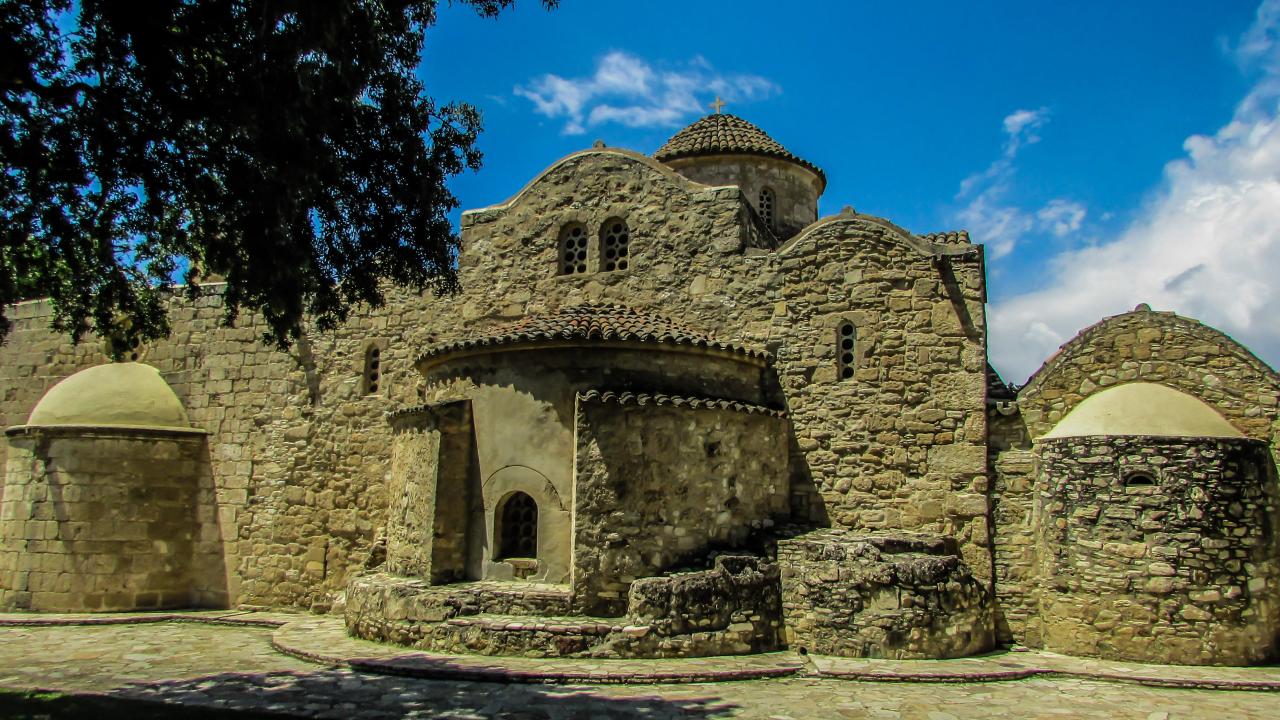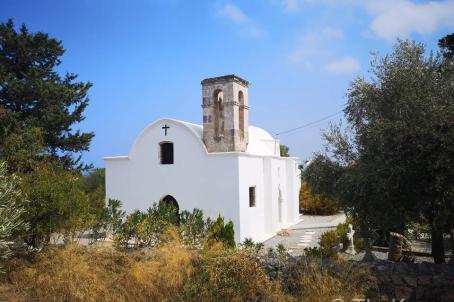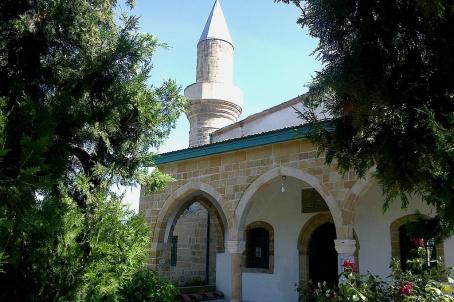Panagia tis Angeloktistis

The Panagia tis Angeloktistis is a Byzantine church, famous for its 6th-century apse mosaic. The present church was mainly built in the 11th century as a domed church with a cross plan, but the apse is the remains of an early Christian basilica from the 5th century. This early basilica was destroyed around 800 during the Arab invasion of Cyprus. Around 1400, a Gothic side chapel was added to the church during the reign of the House of Lusignan in Cyprus to serve the Latin rite for the services of the ruling upper class. Today, the chapel serves as a vestibule to the church. The church has been on the UNESCO World Heritage List since 2015.




